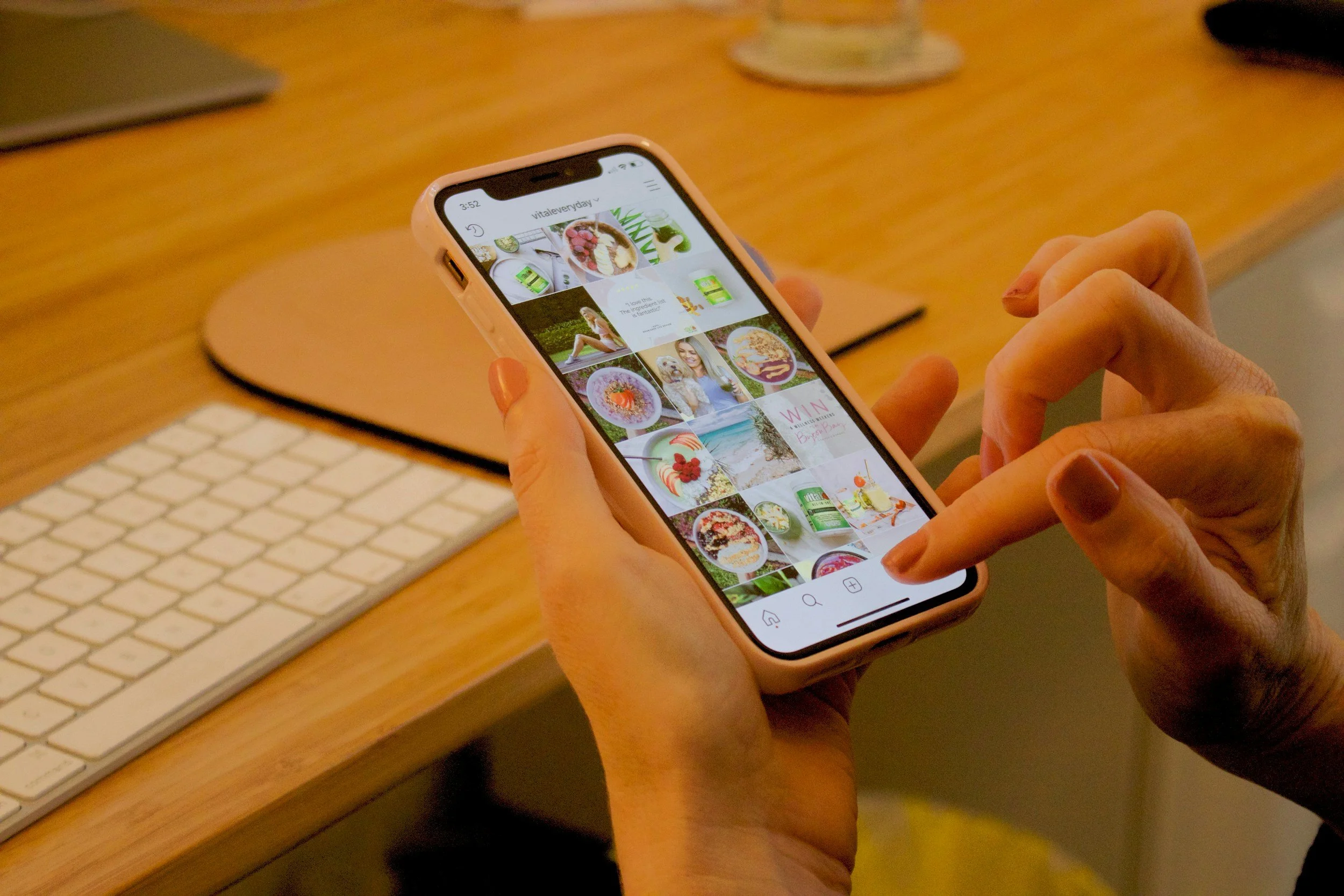The Competitive Analysis Strategy for High-Paying UGC Clients
(The Strategy 99% of Creators Miss)
Here's something most UGC creators get wrong: they pitch their services instead of solving business problems.
I recently discovered a strategy that successful creators use to land clients paying $500-2000+ per video. Instead of sending generic "I can create content for you" emails, they're providing competitive intelligence that positions them as strategic consultants.
Let me show you exactly how to do this.
Why Competitive Analysis Gets You Hired
Think about it from a brand's perspective. They get dozens of pitches from creators every week saying "I can make great content for you!" But they rarely get someone who says "I analyzed your competitors and found a gap that could give you a major advantage."
Which email would you respond to?
When you lead with competitive intelligence, you're not just another creator - you're a strategic partner who understands their business challenges. Brands desperately want this insight but rarely get it from creators.
The Numbers That Make This Strategy Work
Here's why this approach is so powerful:
UGC-based ads receive 4x higher click-through rates than traditional ads
93% of marketers report UGC outperforms branded content
Consumers show 63% increased likelihood of purchasing after viewing authentic UGC
Lo-fi, authentic content performs 63% better for purchases than polished studio content
When you present these insights alongside your competitive analysis, brands see dollar signs.
The 20-Minute Competitive Analysis Framework
You don't need hours to do this research. Here's how to gather powerful insights quickly:
Step 1: Find Their Competitors (5 minutes)
Use these free tools:
Google "[brand name] competitors"
Check their social media to see who they follow
Look at similar price points and target audiences
Identify 3-5 direct competitors
Step 2: Analyze What's Working (15 minutes)
Head to these platforms:
Meta Ad Library: Search competitor names, filter by "Active" ads
TikTok Creative Center: Browse top ads by industry
Competitor social media: Look for high-engagement posts
Document these elements:
Most common content formats (testimonials, demos, lifestyle shots)
Popular hooks and opening lines
Visual style trends (polished vs authentic)
Average video length and performance
Call-to-action strategies
Step 3: Spot the Gaps (5 minutes)
This is where the magic happens. Look for:
Audience segments nobody's targeting
Pain points competitors aren't addressing
Content formats being ignored
Seasonal opportunities being missed
Emotional angles everyone's overlooking
The "Competitive Gap Analysis" Email That Gets Responses
Here's the email template that's generating 3-5x higher response rates:
Subject: Competitive opportunity I spotted for [Brand]
Hey [Name],
I've been analyzing the [industry] space and noticed something interesting about [Brand]'s positioning vs competitors.
What your competitors are crushing:
[Competitor A] is dominating testimonial-style content (averaging 50K+ views)
[Competitor B] has strong product demo presence
Most brands in your space use polished, studio-style content
The gap I spotted: None of your competitors are targeting [specific demographic/use case/pain point]. This represents a huge opportunity to own that narrative before they catch on.
My recommendation: Create authentic, lo-fi content around [specific angle] to capture this underserved audience.
I've developed 3 content concepts that could position [Brand] as the leader in this space. Worth a quick chat to share the full analysis?
Best, [Your name]
Real Example: How This Looks in Practice
Let's say you're targeting a skincare brand. Here's how your analysis might look:
Competitors analyzed: The Ordinary, CeraVe, Fenty Skin
What they're doing well:
Science-focused educational content
Before/after transformations
Ingredient spotlights
The gap you found:
No one's addressing skincare for shift workers (nurses, retail workers)
Missing "skincare on a budget + time crunch" content
Lack of real people in natural lighting
Your strategic recommendation: "Quick & Effective Skincare for Busy Professionals" content series
Content concepts:
"5-Minute Skincare for Night Shift Workers"
"Drugstore vs. [Brand]: Real Results After 30 Days"
"Skincare That Works in Fluorescent Office Lighting"
Advanced Strategy: The One-Page Visual Breakdown
Create a simple document that includes:
"[Brand] vs Competition: Content Strategy Analysis"
Section 1: What's working in your industry
Section 2: White space opportunity
Section 3: Strategic recommendation
Section 4: Specific content concepts
This visual makes your insights easy to digest and share internally at the brand.
Common Questions About This Strategy
How long should I spend on each analysis?
Stick to 20-30 minutes maximum. You're looking for big-picture insights, not exhaustive research.
What if I can't find obvious gaps?
Look deeper at demographics, use cases, and emotional angles. There's always something competitors aren't covering.
Should I include competitor names in my pitch?
Yes, but frame it professionally. You're providing market intelligence, not gossip.
How many brands should I analyze per week?
Focus on 3-5 brands maximum. Quality beats quantity every time.
Tools to Speed Up Your Research
Free options:
Meta Ad Library for Facebook/Instagram ads
TikTok Creative Center for trending content
Google Ads Transparency Center
Brand hashtag searches sorted by "Top" posts
Paid tools worth the investment:
Kaya's Competitor Intelligence (aggregates ads with spend data)
Archive Competitor Insights (captures 5x more content than other platforms)
Why This Strategy Beats Traditional Pitching
Most creators lead with their credentials or past work. But brands don't care about your journey - they care about what you can do for them.
When you lead with competitive analysis, you're demonstrating:
Deep market understanding
Strategic thinking ability
Immediate business value
Professional expertise
This positions you for ongoing partnerships, not just one-off projects.
Getting Started Today
Pick one brand you'd love to work with and spend 30 minutes doing this analysis. Even if you don't pitch them immediately, you'll start seeing patterns in your industry that will inform all your future outreach.
Remember: you're not just creating content anymore. You're providing strategic competitive intelligence that helps brands win in their market.
The creators making $2000+ per video aren't necessarily better at filming - they're better at positioning themselves as strategic partners who understand business.
Ready to Transform Your UGC Approach?
This strategy works because it flips the traditional creator-brand dynamic. Instead of asking for opportunities, you're providing solutions to problems they didn't even know they had.
Try this with your next three brand outreach emails and watch your response rates skyrocket. When you lead with value instead of services, everything changes.
What brands in your niche could benefit from this type of competitive analysis?
If you’d like an AI prompt to help you do this faster, email: genxugc@jennylainedesigns.com with the subject line “AI Email Pitch Prompt”
About the Author: Jennifer is a UGC creator with her husband and online marketing strategist who helps business owners connect with their ideal audience through email marketing, SEO/AI optimization, and web design. If you need help creating a strategic plan for your business, connect with her at hello@jennylainedesigns.com


